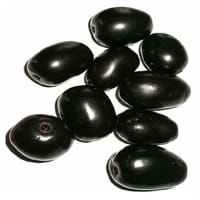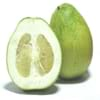Health Benefits
Cancer prevention, Heart care, Increase in haemoglobin, Regulates Blood Sugar, Ulcer prevention
Good for diabetics, Improves well-being, Miraculin/miracle fruit makes sour things taste sweet
General Benefits
Boosts immune system, Digestive aid, Fights against infections, Strengthens bones
Has taste modifying effect
Skin Benefits
Brightens and lightens complexion, Skin cleansing, Skin rejuvenation, Treatment of acne, Treatment of dark spots
NA
Hair Benefits
Promotes longer and healthier hair, Protects hair
NA
Allergy Symptoms
Abdominal pains, NA
Itching, Skin rash
Side Effects
Decrease in blood sugar levels, Allergic reaction, Throat irritation, Throat swelling, Possibly unsafe during pregnancy
Changes taste of food eaten after this fruit, Coagulation
Best Time to Eat
As a snack in the late afternoon, Don't consume at night and before bed, Eat the fresh ones, avoid mixing with any other foods, don't eat after meal., Morning time (before lunch), Strictly avoid empty stomach
As a snack in the late afternoon, Eat the fresh ones, avoid mixing with any other foods, don't eat after meal., Morning time (before lunch)
Protein to Carb Ratio
Not Available
Vitamin A (Retinol)
Not Available
Vitamin B1 (Thiamin)
Not Available
Vitamin B2 (Riboflavin)
Not Available
Vitamin B3 (Niacin)
Not Available
Vitamin B6 (Pyridoxin)
Not Available
Vitamin C (Ascorbic Acid)
Vitamin E (Tocopherole)
Not Available
Phytosterol
Not Available
Water Content
Not Available
Calories in Fresh Fruit with Peel
Not Available
Calories in Fresh Fruit without Peel
Not Available
Not Available
Calories in Frozen Form
Not Available
Not Available
Calories in Dried Form
Not Available
Not Available
Calories in Canned Form
Not Available
Not Available
Calories in Juice
Not Available
Calories in Jam
Not Available
Calories in Pie
Not Available
Type
Tree fruit, Tropical
Berry
Season
Monsoon, Summer
Monsoon
Varieties
Ram Jarnun and Paras
Gymnema Sylvestre and Thaumatococcus Daniellii
Color
Black, Magenta, Purple
Dark red
Inside Color
Purple
Greyish-white
Taste
Astringent, Sweet
NA, Sweet
Origin
Bangladesh, India, Indonesia, Malaysia, Nepal, Pakistan, Philippines, Sri Lanka
West Africa
Soil Type
Loam, Sandy loam, Well-drained
Well-drained
Climatic Conditions
Humid, Rainfall
Rainfall
Facts about
- Wood of jambul tree is water-resistant wood & is used in railroads and to implement engines in the well.
- In Indian mythology, it is said that Jambul fruit was revered by Buddha.
- Jambul has a huge importance in Ayurveda.
- The name 'Miracle' because of the magical experience you get after eating it.
- When you have lemon after eating this fruit, it tastes sweet as if it is added with sugar.
- It is also used as natural sweetener.
Other Countries
Bangladesh, Indonesia, Malaysia, Nepal, Pakistan, Philippines, Sri Lanka
NA
Top Importer
Not Available
Not Available
Top Exporter
India
United States of America
Botanical Name
Syzygium cumini
Synsepalum Dulcificum
Synonym
Eugenia cumini
Miracle Berry, Miraculous Berry and Sweet Berry
Subkingdom
Tracheobionta
Tracheobionta
Division
Magnoliophyta
NA
Subclass
Rosidae
Asteridae
Family
Myrtaceae
Sapotaceae
Genus
Syzygium
Synsepalum
Species
S. cumini
S. dulcificum
Generic Group
Not Available
Not Available
Difference Between Jambul and Miracle fruit
We might think that Jambul and Miracle fruit are similar with respect to nutritional value and health benefits. But the nutrient content of both fruits is different. Jambul and Miracle fruit Facts such as their taste, shape, color, and size are also distinct. The difference between Jambul and Miracle fruit is explained here.
The amount of calories in 100 gm of fresh Jambul and Miracle fruit with peel is 60.00 kcal and Not Available and the amount of calories without peel is Not Available and Not Available respectively. Thus, Jambul and Miracle fruit belong to Low Calorie Fruits and Low Calorie Fruits category.These fruits might or might not differ with respect to their scientific classification. The order of Jambul and Miracle fruit is Myrtales and Ericales respectively. Jambul belongs to Myrtaceae family and Miracle fruit belongs to Sapotaceae family. Jambul belongs to Syzygium genus of S. cumini species and Miracle fruit belongs to Synsepalum genus of S. dulcificum species. Beings plants, both fruits belong to Plantae Kingdom.









